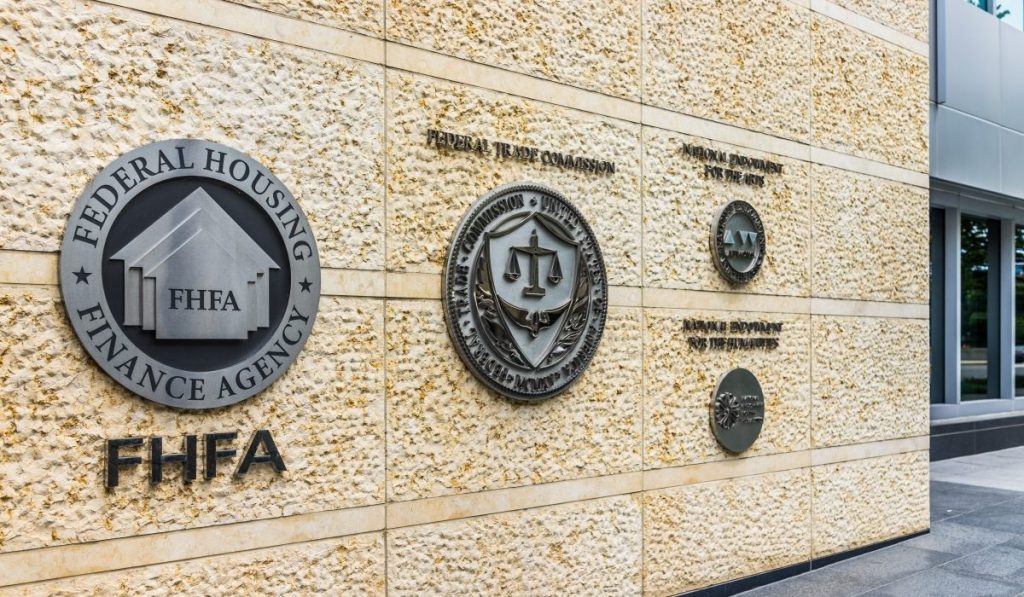The FHFA proposed a rule on Wednesday to amend the Enterprise Regulatory Capital Framework (ERCF) for the GSEs that would refine the leverage buffer and the risk-based capital treatment for CRT transactions. However, far from reopening the whole discussion on the ERCF, the new rule proposes three specific amendments based on comments the FHFA received last year.
The proposed amendments “would better reflect the risks inherent in the Enterprises’ business models and encourage the Enterprises to distribute acquired credit risk to private investors rather than to buy and hold that risk,” the FHFA’s outline states.
The amendments would:
1. Replace the fixed prescribed leverage buffer amount (PLBA) equal to 1.5% of an enterprise’s adjusted total assets with a dynamic PLBA equal to 50% of the enterprise’s stability capital buffer
2. Replace the prudential floor of 10% on the risk weight assigned to any retained CRT exposure with a prudential floor of 5% on the risk weight assigned to any retained CRT exposure;
3. Remove the requirement that an enterprise must apply an overall effectiveness adjustment to its retained CRT exposures in accordance with the ERCF’s securitization framework.
The proposed rule would also make technical corrections to various provisions of the ERCF that was published on December 17, 2020.
After FHFA leadership change, what’s next for brokers?
The recent changes to leadership in the FHFA have shaken the industry – but will the impact have a positive or negative impact on brokers?
Presented by: Flagstar Bank
In explaining its rationale for the changes, the FHFA says that linking the PLBA to the ERCF’s stability capital buffer, with refinements to the ERCF’s CRT securitization framework, “would enhance the safety and soundness of the Enterprises by removing inappropriate capital disincentives to the Enterprises to transfer risk.”
In an interview with HousingWire, Ed Demarco, president of the Housing Policy Council and former acting director of the FHFA, said the bulk of the December 2020 final rule was left intact.
“It is a very targeted set of amendments,” DeMarco said. “When FHFA proposed this rule last year, it received a number of comments from stakeholders, including the Housing Policy Council, criticizing these very provisions.
“The three things that are being proposed in this rule are absolutely the right three things to be focused on, and directionally this all appears to be quite responsive to the comments,” DeMarco said.
The dynamic leverage buffer is key to the changes, DeMarco said.
“There’s a lot of history here in the bank regulatory framework about what’s the proper relationship of a leverage ratio compared to the risk base requirement…we and others said your leverage buffer is excessive. It’s excessive compared to bank regulators, it’s excessive in terms of the economics of the business, and it’s actually going to incentivize greater risk taking.”
DeMarco said the proposed rule offers a new way of calibrating the leverage buffer, which will result in something less than 150 basis points. And it solves the issue of requiring capital for the same risk in two different places: with the CRT investor and the GSE.
“FHFA got a lot of feedback from a lot of stakeholders that their proposed capital rule was basically layering capital on CRT, that is requiring capital on the credit risk transfer investors providing capital, but the GSE still had to provide substantial capital on the risk that debt is sold off to a CRT investor,” DeMarco said.
“And so, basically, FHFA is acknowledging that in this proposal and acknowledging that the economic effect of the way that was done, is going to require so much capital on CRT deals, that it becomes uneconomic to the GSEs to even engage in credit risk transfer. It would be less expensive for them to hold all that risk on their own balance sheet.”
The FHFA acknowledges the negative effect the current capital rule could have on their ultimate goal: to reduce risks to the taxpayers. “If the Enterprises were to substantially shrink their risk transfer programs for an extended period, either in response to regulatory policies or macroeconomic conditions, potential taxpayer exposure and systemic risk may increase as a result. The refinements in this proposal would lessen the potential deterrents to Enterprise risk transfer.”
DeMarco said the Housing Policy Council welcomed the changes.
“We think they’re focused on the right things and we’re actually pleased that they did not reopen the whole rule because there were a lot of good things in that framework itself, it’s a reasonable framework. And the rule itself was reasonably well done. What’s being proposed here is actually getting at the key issues that several of us pointed out were flawed in the proposal last year.”
The ERCF evolved from FHFA’s proposals for Enterprise Regulatory Capital Frameworks in 2018 and 2020, which were based on the FHFA Conservatorship Capital Framework established in 2017.







